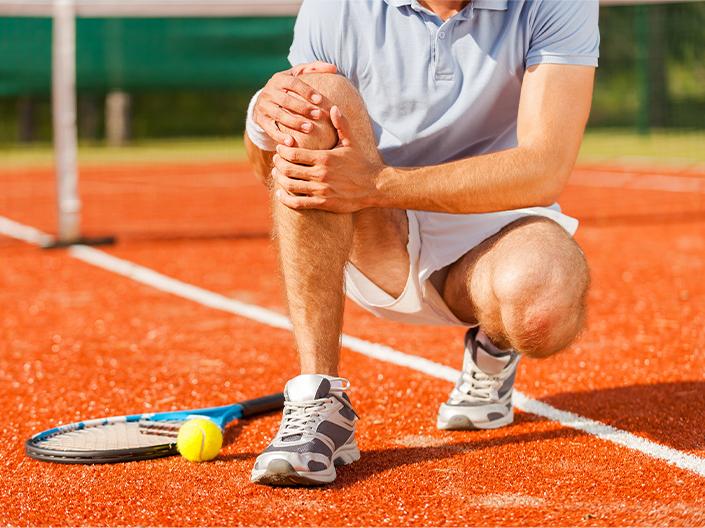Q. How can I prevent neck and back pain?
• Regular stretching and strengthening of muscles will help prevent desk job-related neck and back pain.
• At work, certain modifications should be done to suit your body requirements, for example, adjusting the height of the computer screen at your eye level and placing it in front of you.
• Avoid the light glare on the screen.
• Support your lower back while sitting.
• Rest both feet on the ground.
• Don’t lean on your table.
• Avoid crossing your legs when sitting.
• Regular breaks must be taken at intervals of 40 to 45 minutes.
Q. What is plantar fasciitis?
A. Plantar fasciitis is a very common cause of inferior heel pain that can be triggered and aggravated by prolonged standing, walking, running and obesity, among other factors. The plantar fascia is located along the sole of your foot. It is made up of fibrous tissue that stretches outward from the heel bone, like a strong piece of elastic, and then branches out across the arch and through the ball area of the foot toward the toes. The patient usually presents with gradual onset of pain over the medial side of the plantar heel that is most noticeable when taking the first few steps in the morning. The pain may get better after a short period of walking but returns when performing activities that involve prolonged weight-bearing, such as standing, walking, or running. The patient may also complain that heel pain worsens after repeat weight-bearing following a period of rest, such as standing after a period of sitting at a desk.
Applying ice several times a day for 15 to 20 minutes, using proper fitting footwear, and stretching the calf muscles will help manage the pain along with Physiotherapy.
Q. What is tennis elbow?
A. Lateral epicondylitis, commonly referred to as tennis elbow, is an overuse injury, originating in the wrist extensor muscles. The overuse causes microtears near the origin of the extensor carpi radialis brevis (ECRB) at the lateral epicondyle. It is brought on by occupational activities and sports that involve a repetitive wrist motion or a power grip. The tennis elbow usually presents as a small area of chronic pain on the lateral aspect of the elbow. Other characteristic symptoms are pain on wrist extension, pain when shaking hands, and frequently a weakened grip. Even lifting a cup of coffee can precipitate pain.
Avoid lifting heavy objects or gripping with extreme force.
Apply ice several times over the elbow for 15 to 20 minutes. Consult an Orthopaedic Doctor if the pain does not subside.
Q. What is rotator cuff injury?
A. The rotator cuff includes four muscles namely subscapularis, infraspinatus, supraspinatus, and teres minor. These muscles arise from the scapula(shoulder blade) and are inserted into the lesser and greater tubercles of the humerus. The tendons, while crossing the shoulder joint, become flattened and blend with each other on the one hand, and with the capsule of the joint on the other hand, before reaching the points of insertion. The rotator cuff muscles play an important role in the dynamic stabilization of the shoulder joint.
Rotator cuff injury is a common cause of shoulder pain. The rotator cuff tendons, particularly the supraspinatus tendon, are uniquely susceptible to the compressive forces of subacromial impingement. Improper athletic technique, poor posture, poor conditioning, and failure of the subacromial bursa to protect the supporting tendons results in a progressive injury from acute inflammation, to calcification, to degenerative thinning, and finally to a tendon tear.
Rotator cuff problems without tears can be treated conservatively with exercise and NSAIDs. Limiting overhead activities and using ice packs or heating pads will help with pain management.
Q. What is Sciatica?
A. Sciatica is a symptom defined as unilateral, well-localized leg pain with a sharp, shooting or burning quality that approximates to the dermatomal distribution of the sciatic nerve down the posterior aspect of the leg, and normally radiates to the foot or ankle. It is often associated with numbness or paraesthesia in the same distribution. Sciatica caused by lumbar nerve root pain usually arises from a prolapsed intervertebral disc but also from spinal stenosis, or surgical scarring as well as other aetiologies such as trauma and tumors.
The most distinctive sign of sciatica is pain that radiates from your lower back into the back or side of your legs. It can range from a mild ache to sharp, severe pain.
Sciatica pain can be managed with medications, Physiotherapy and exercises.


